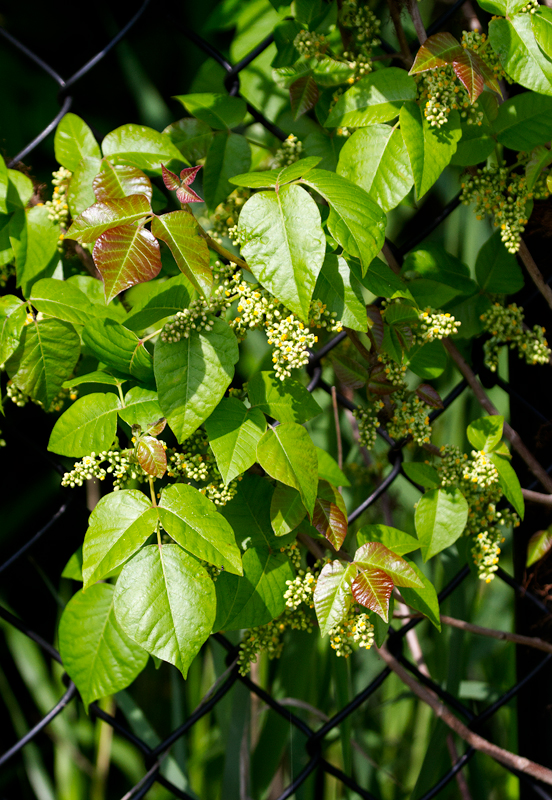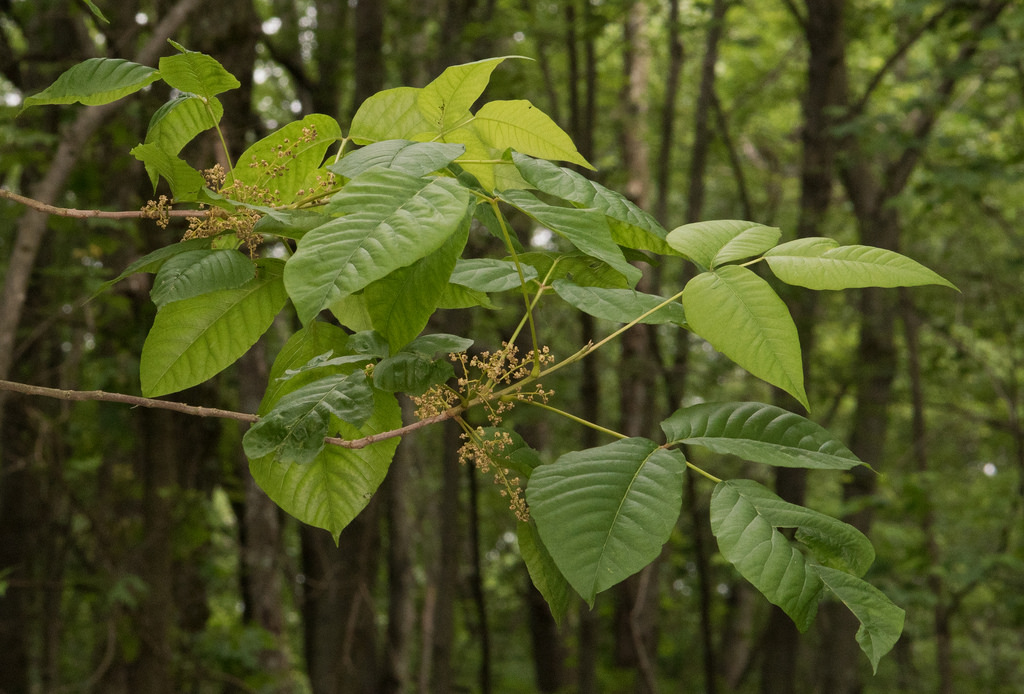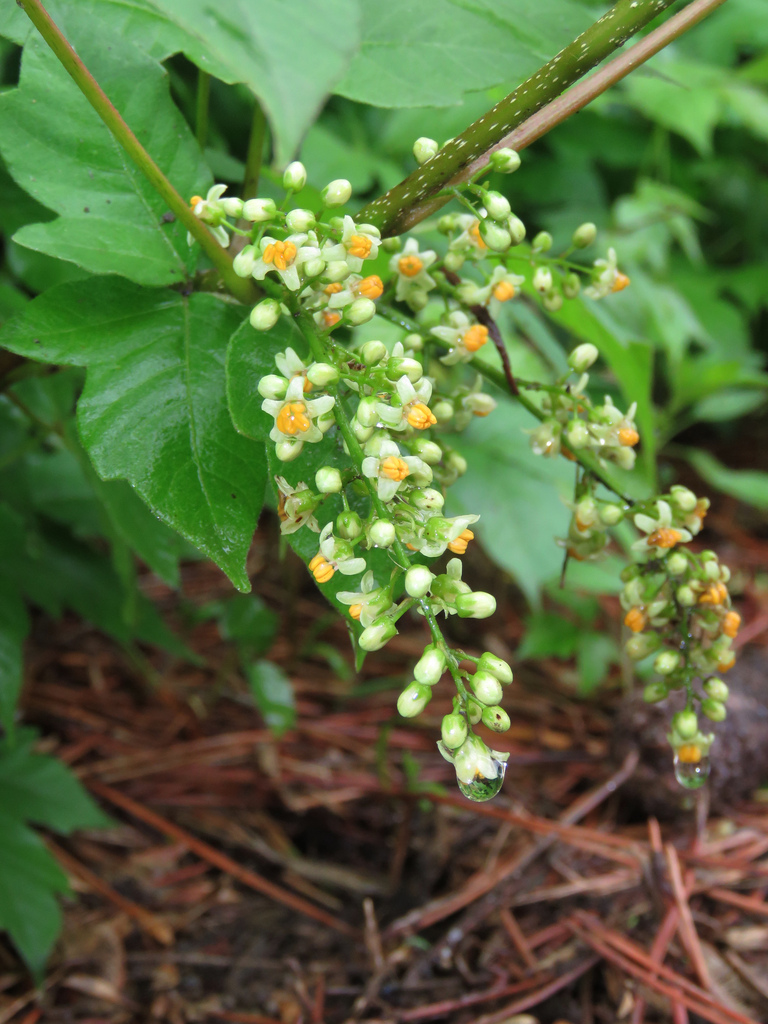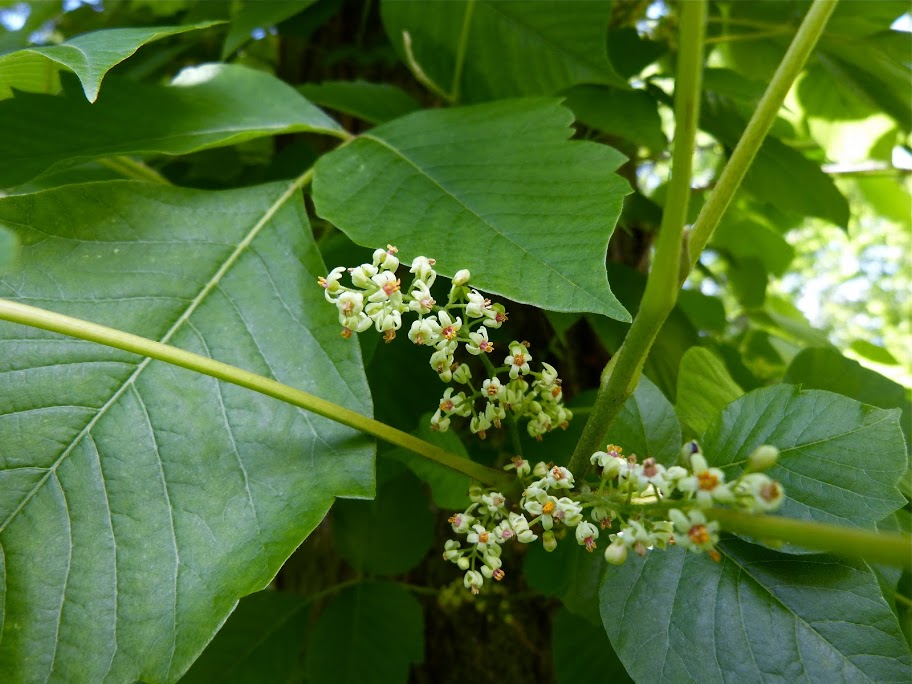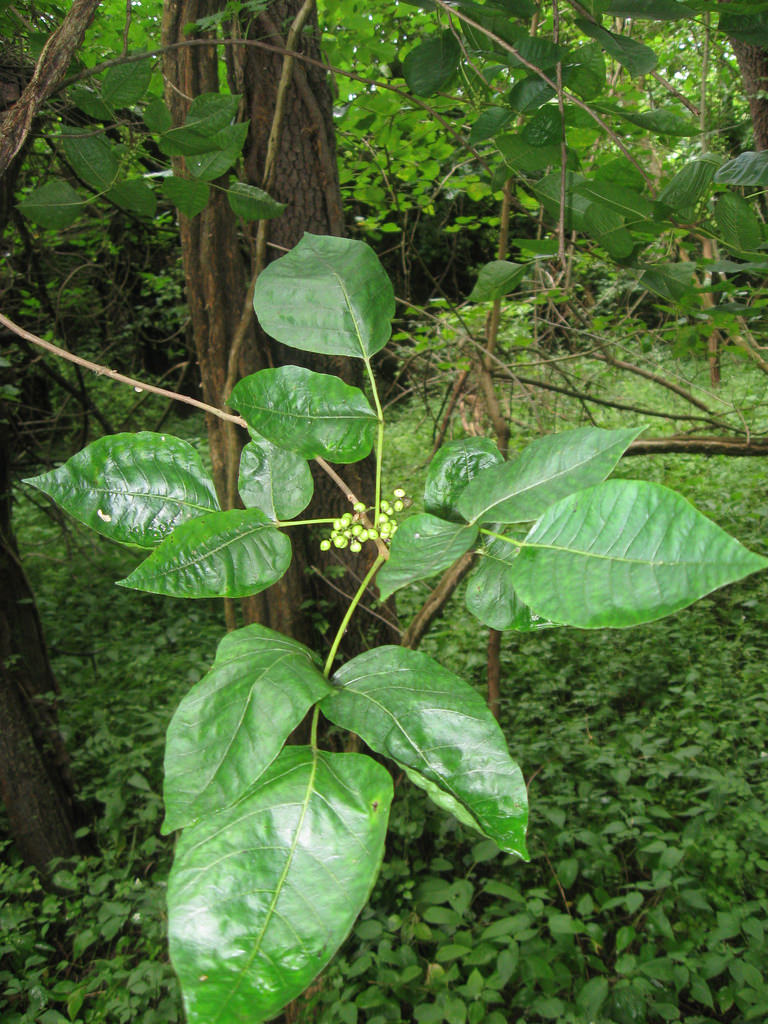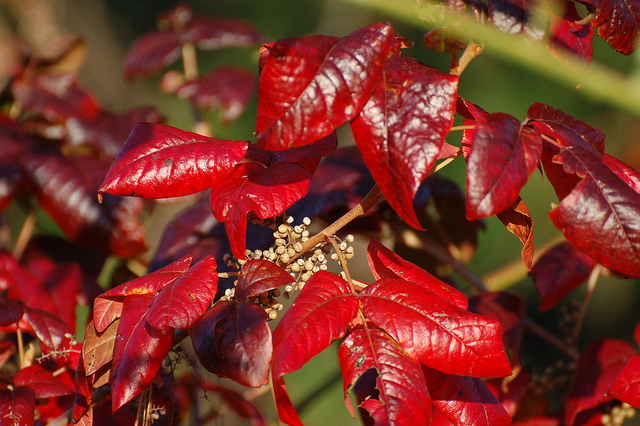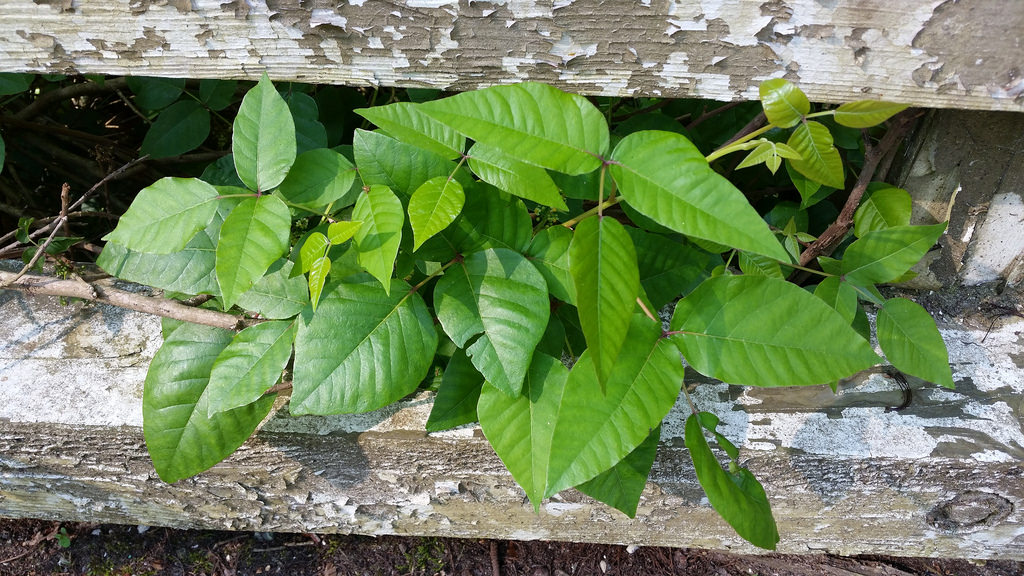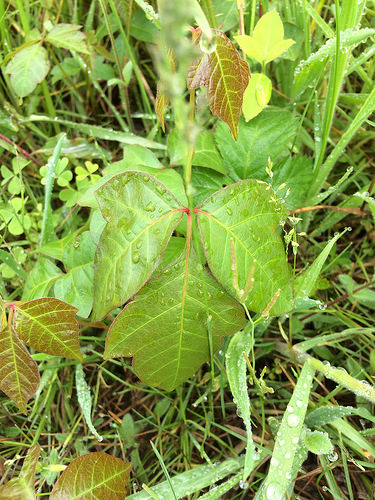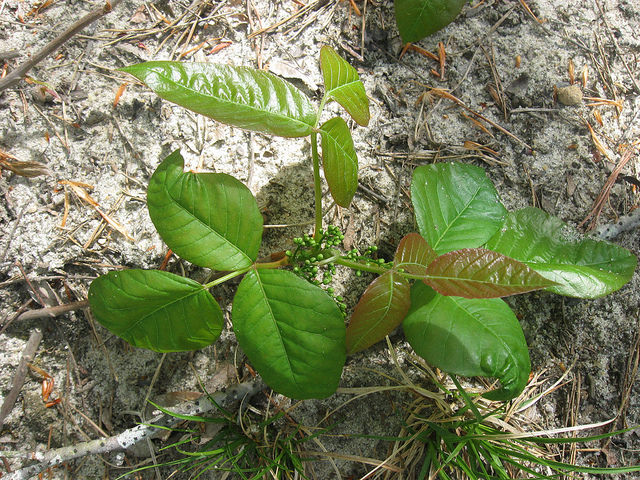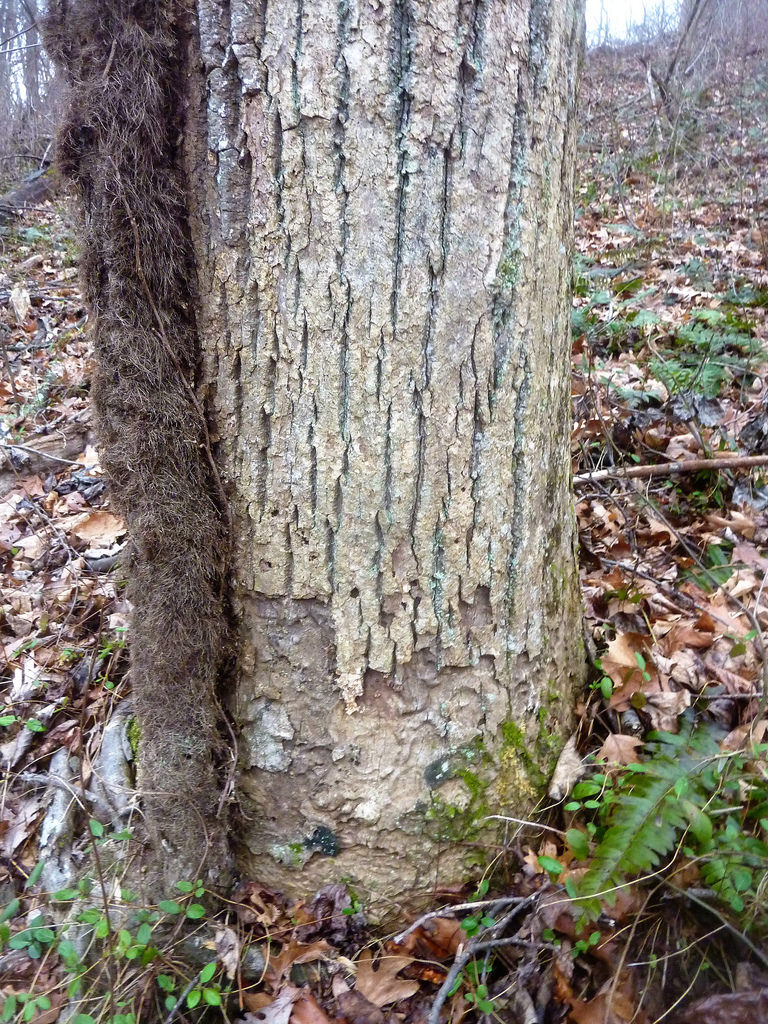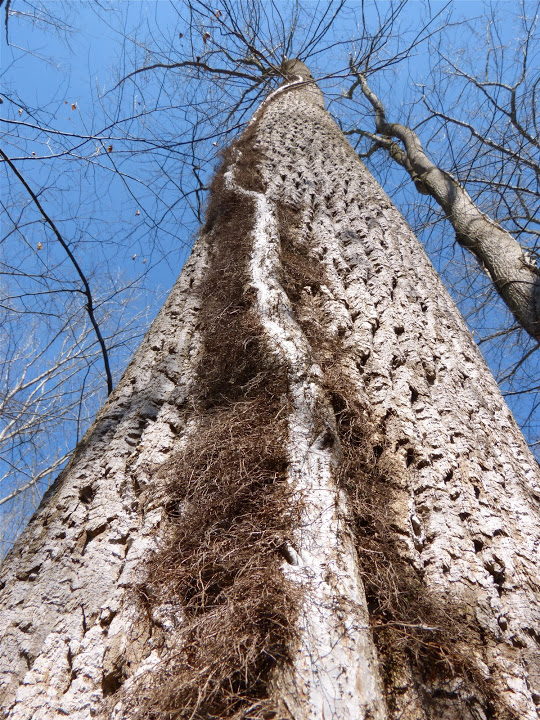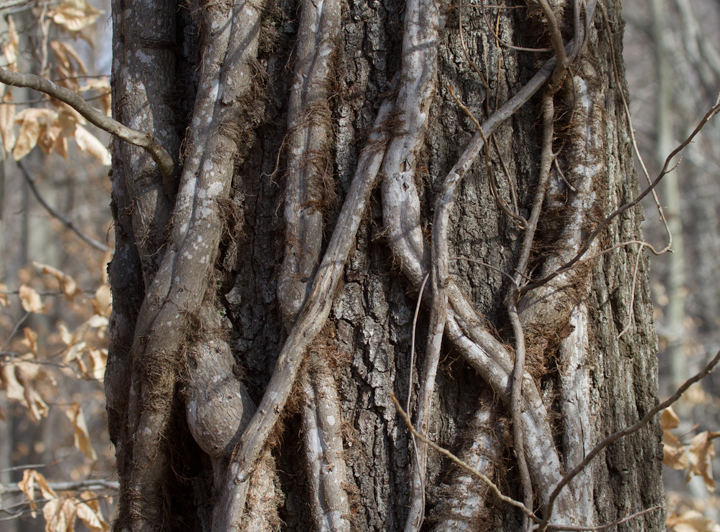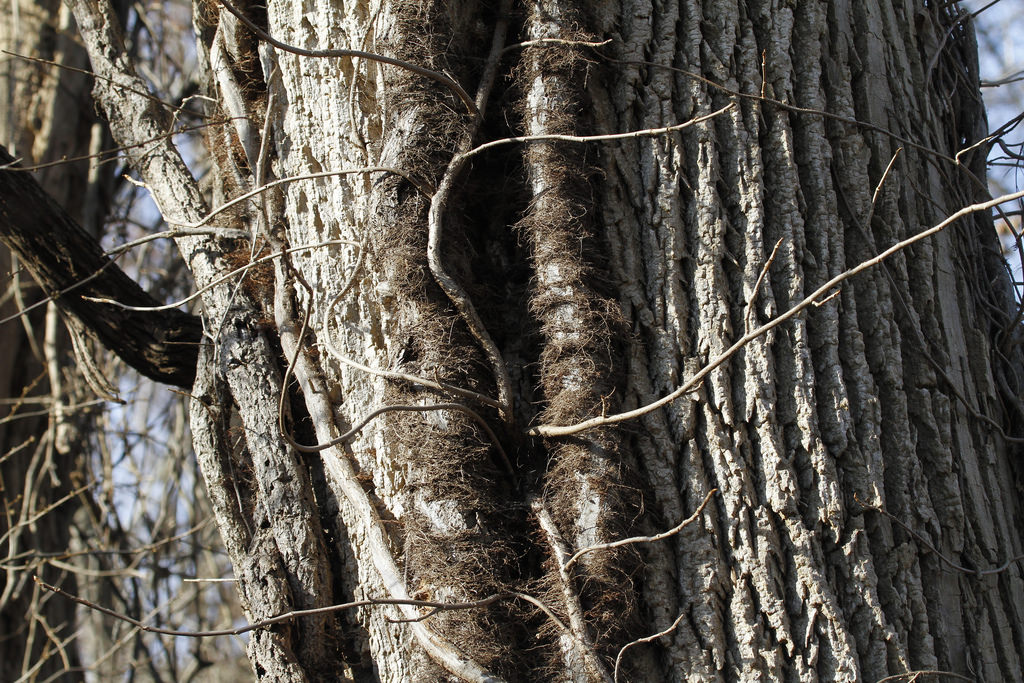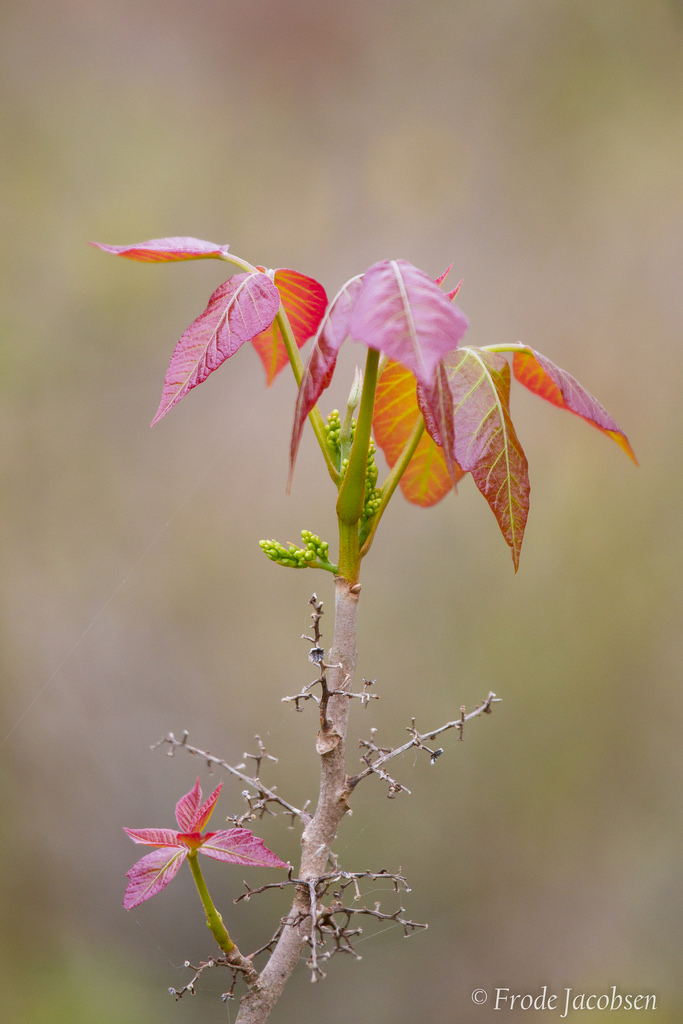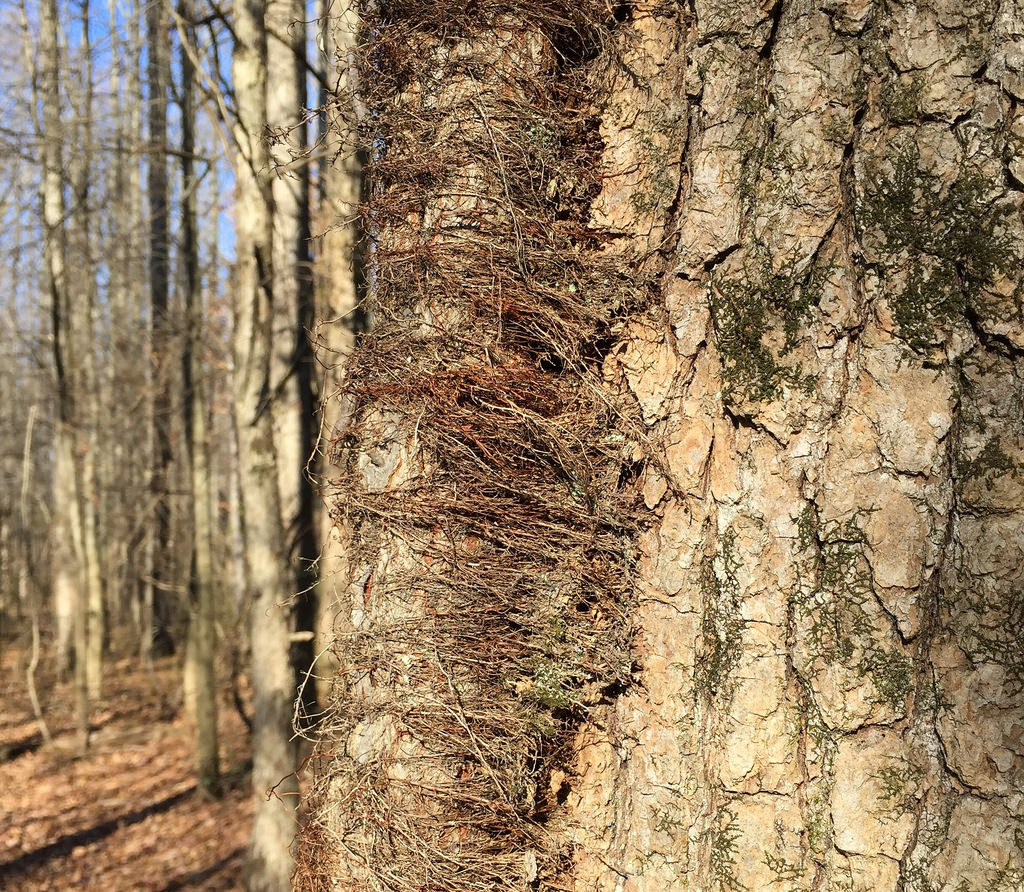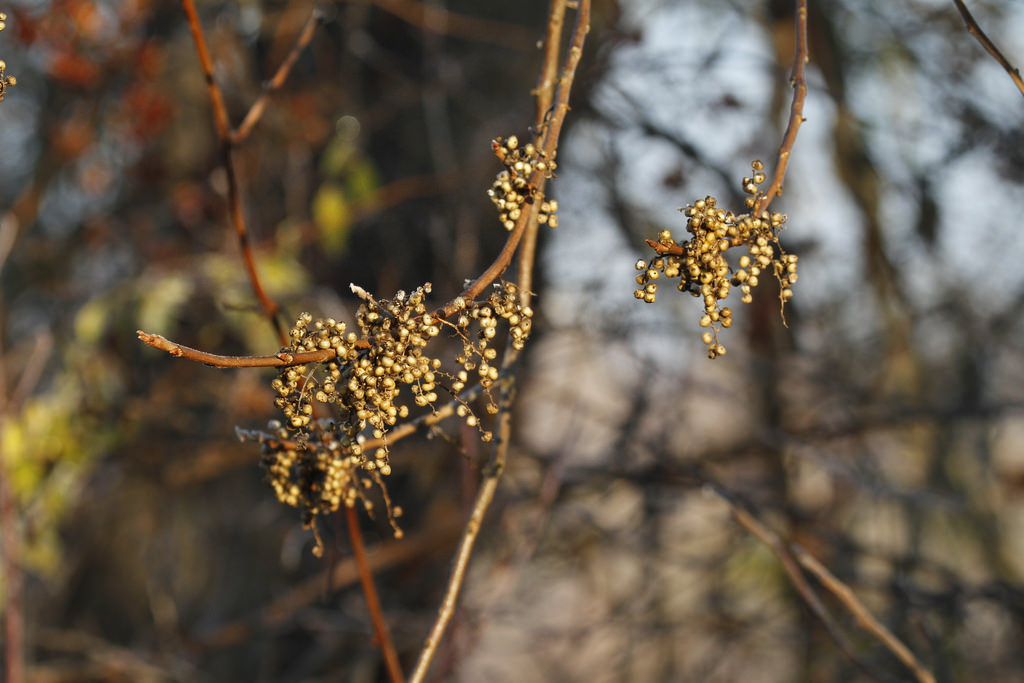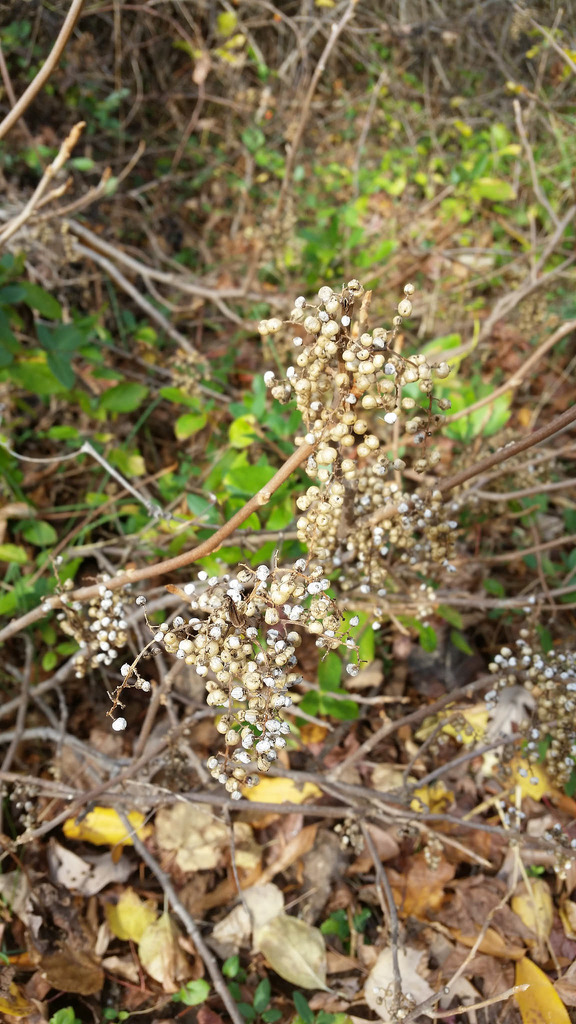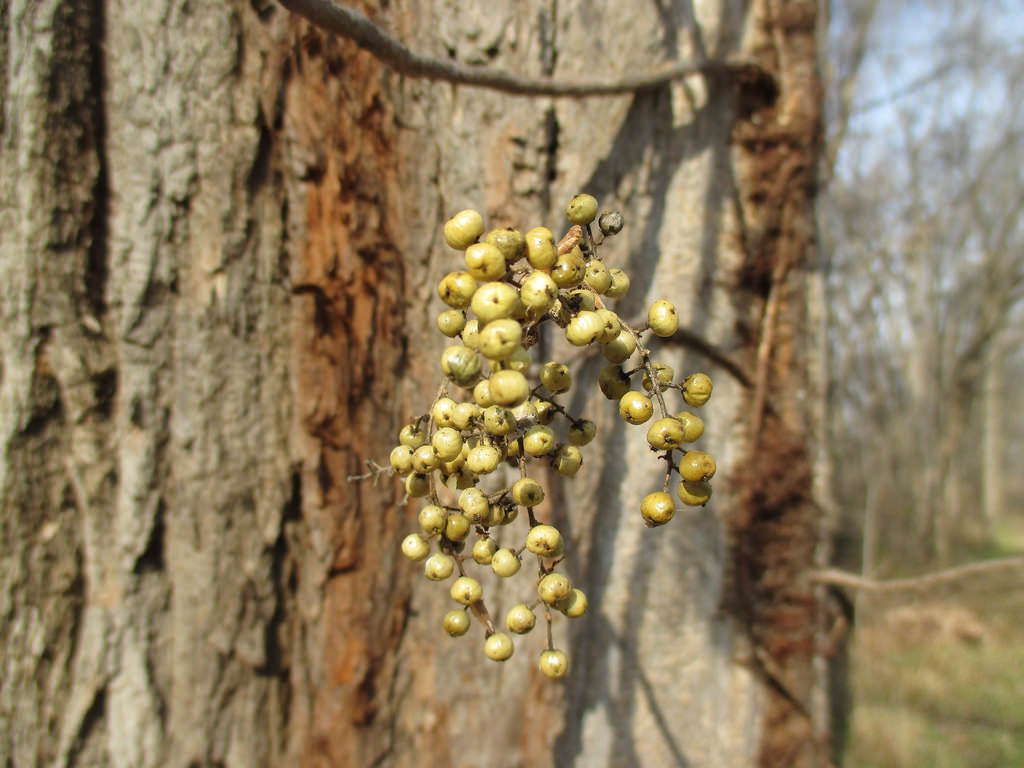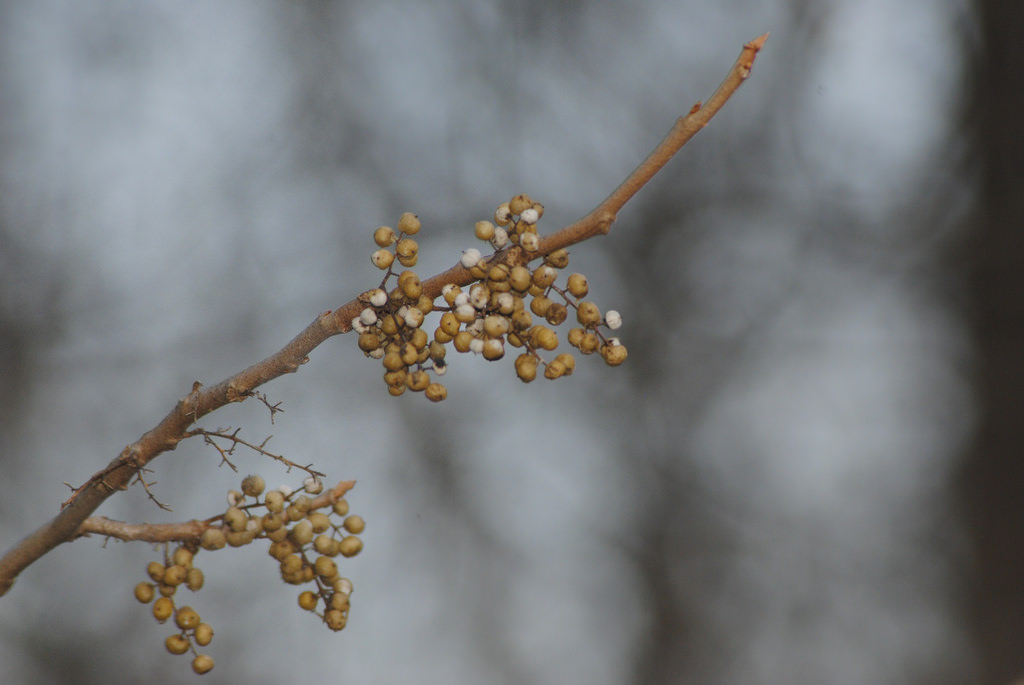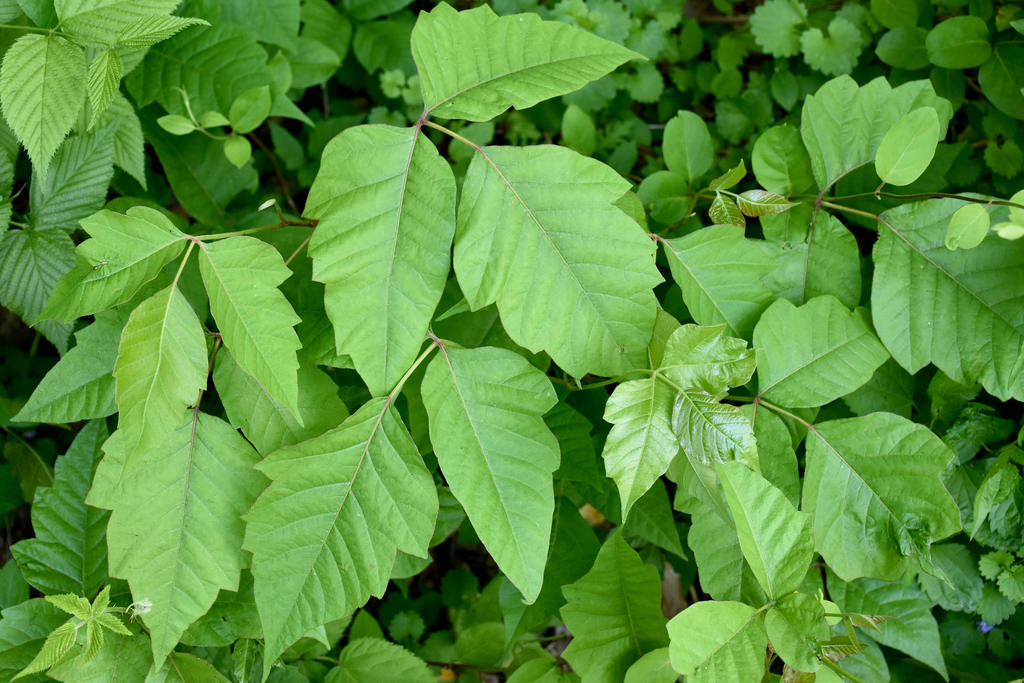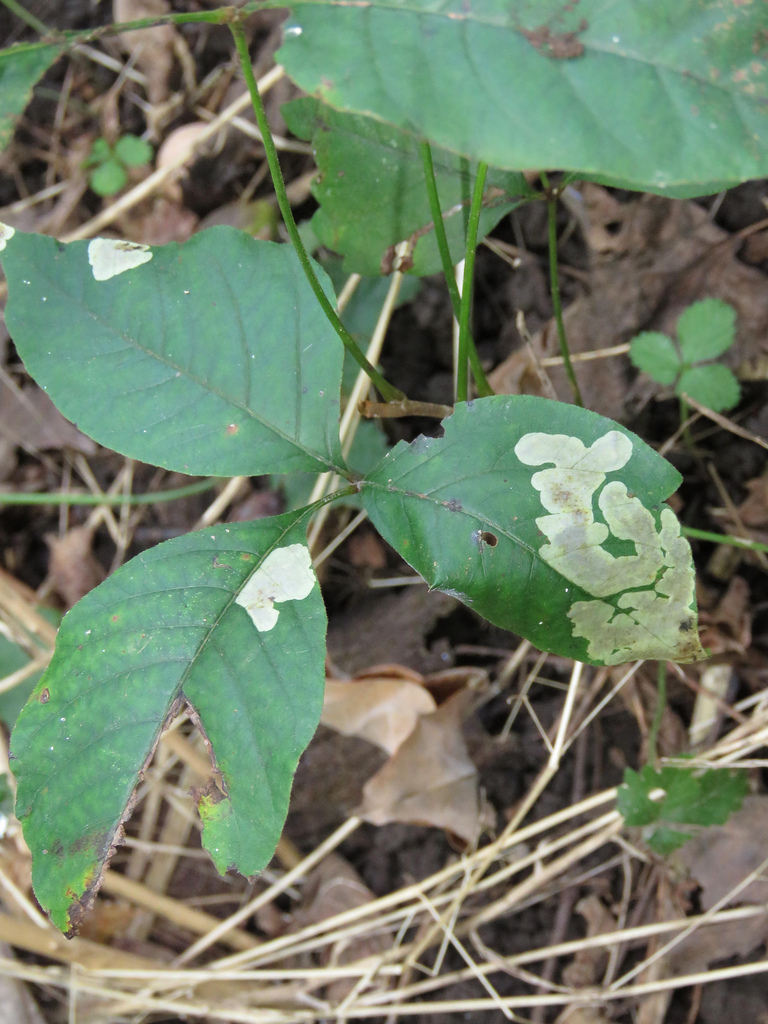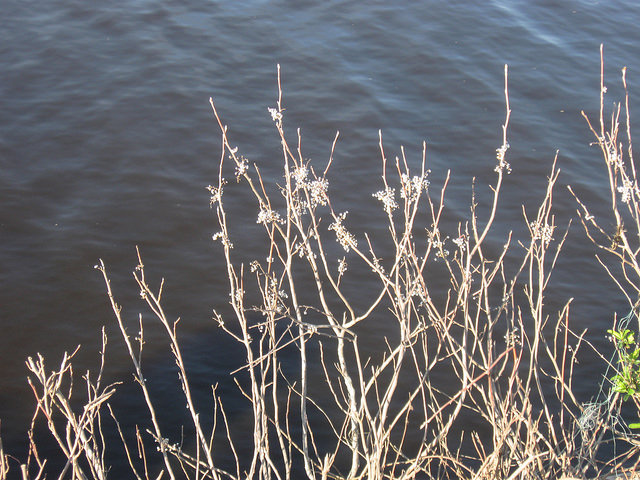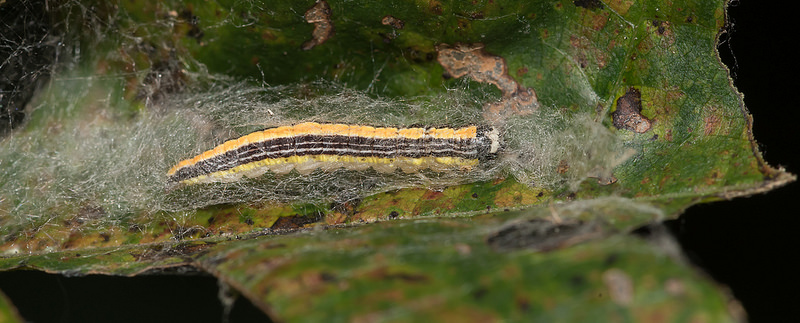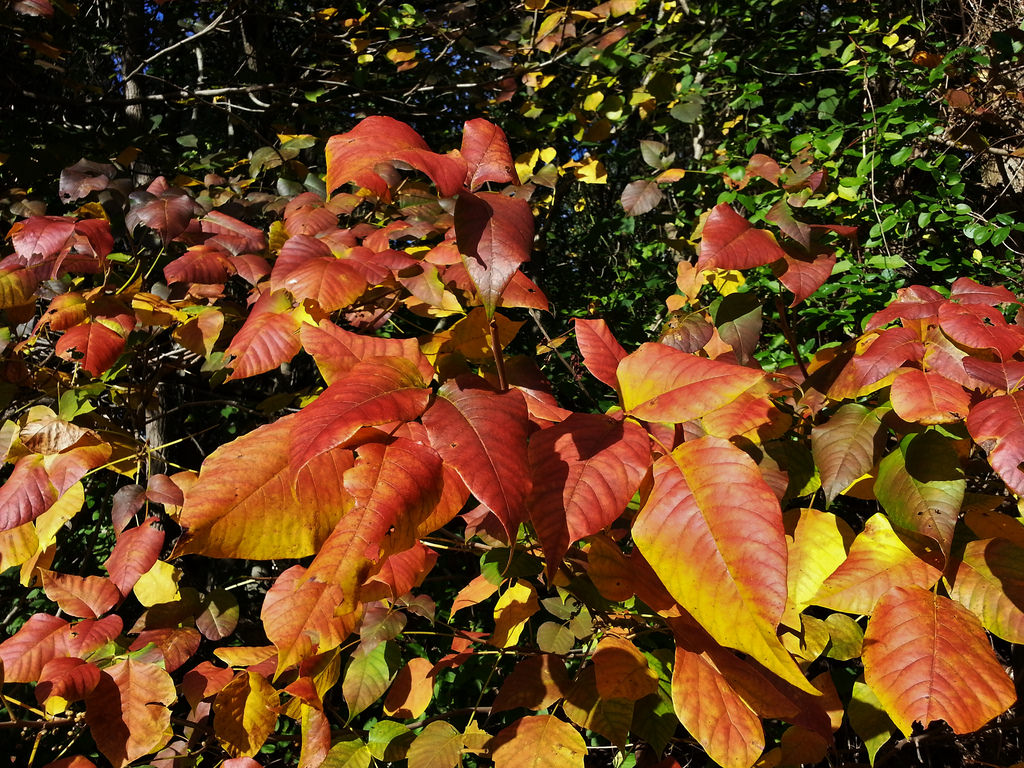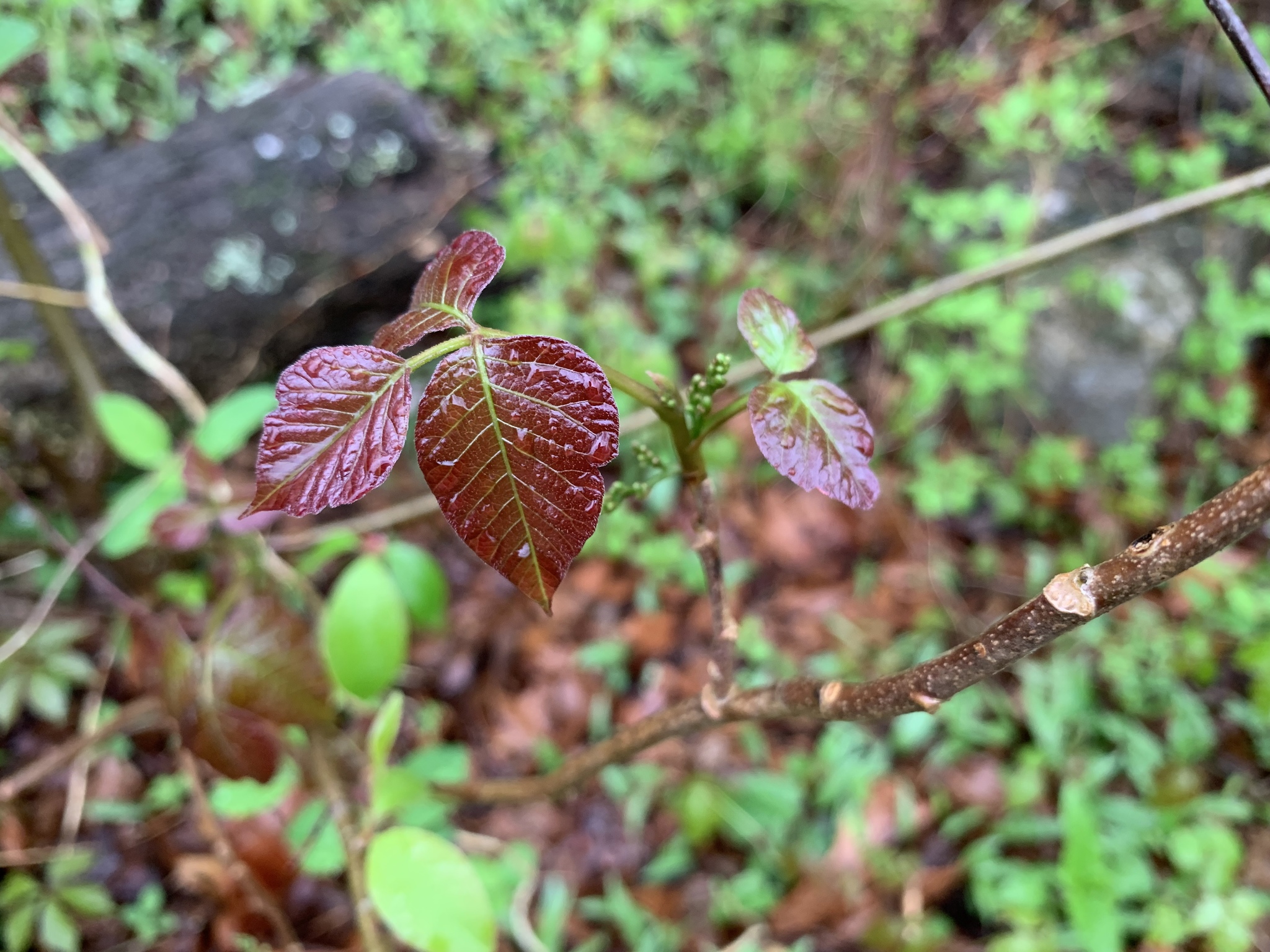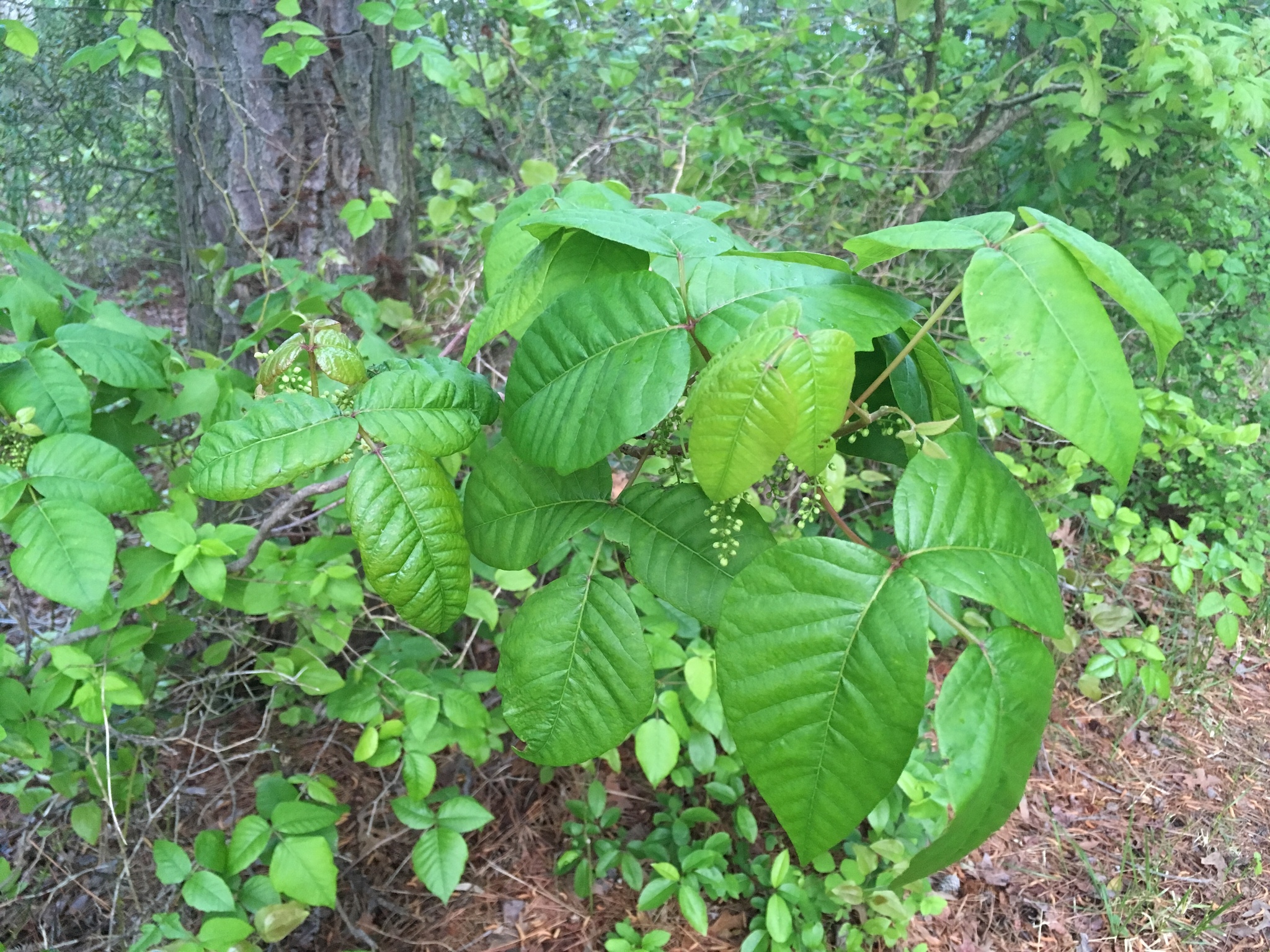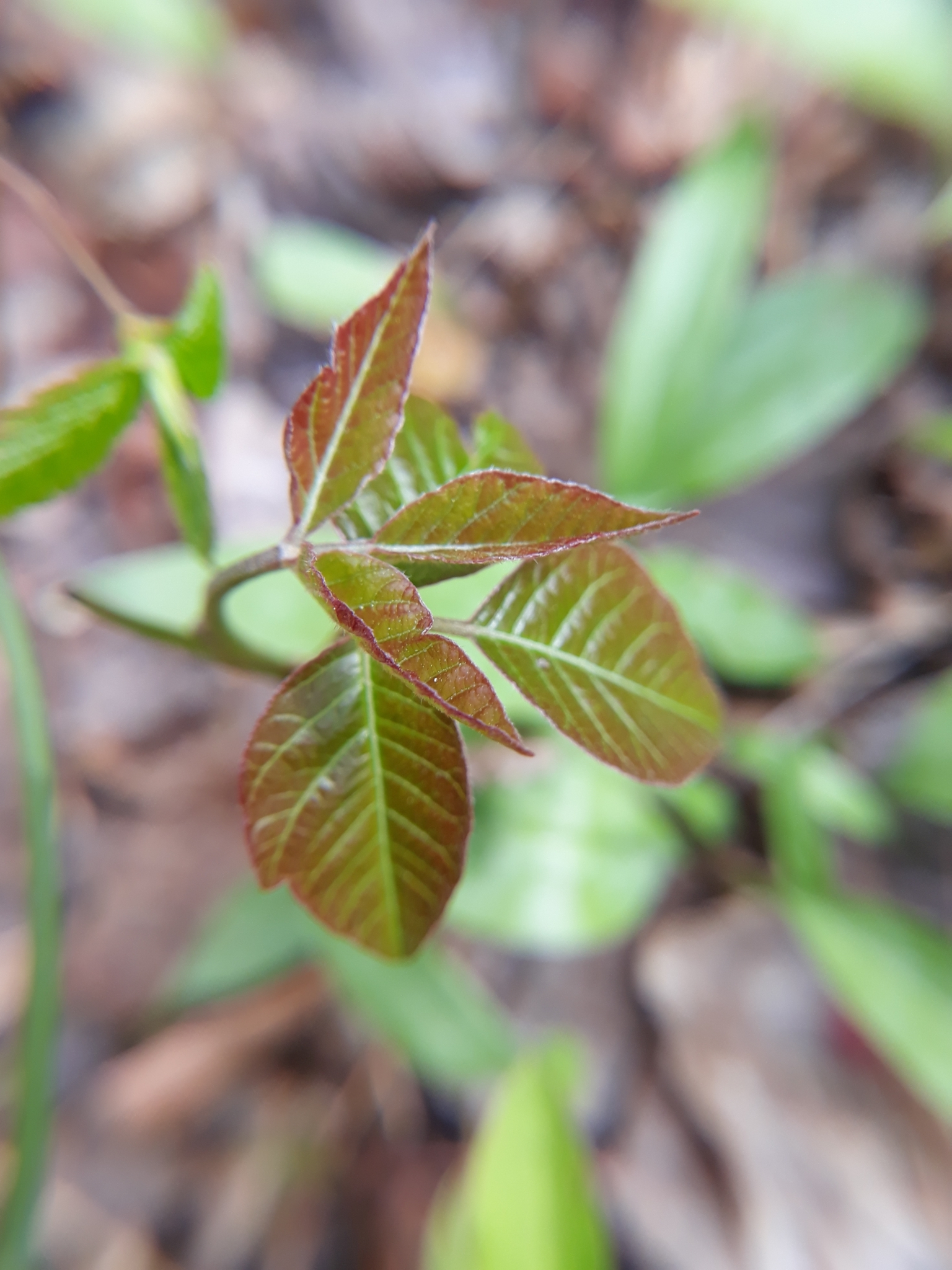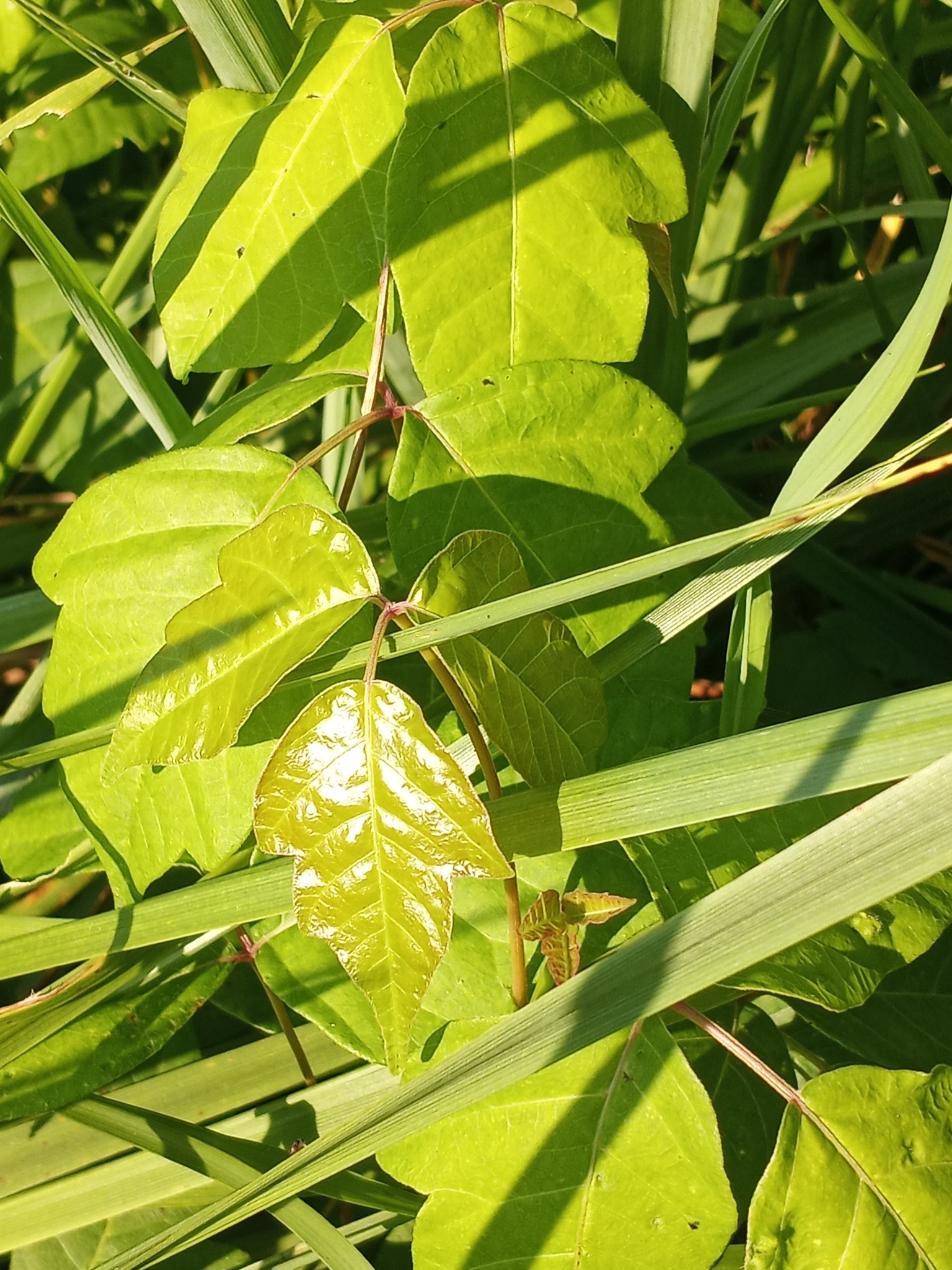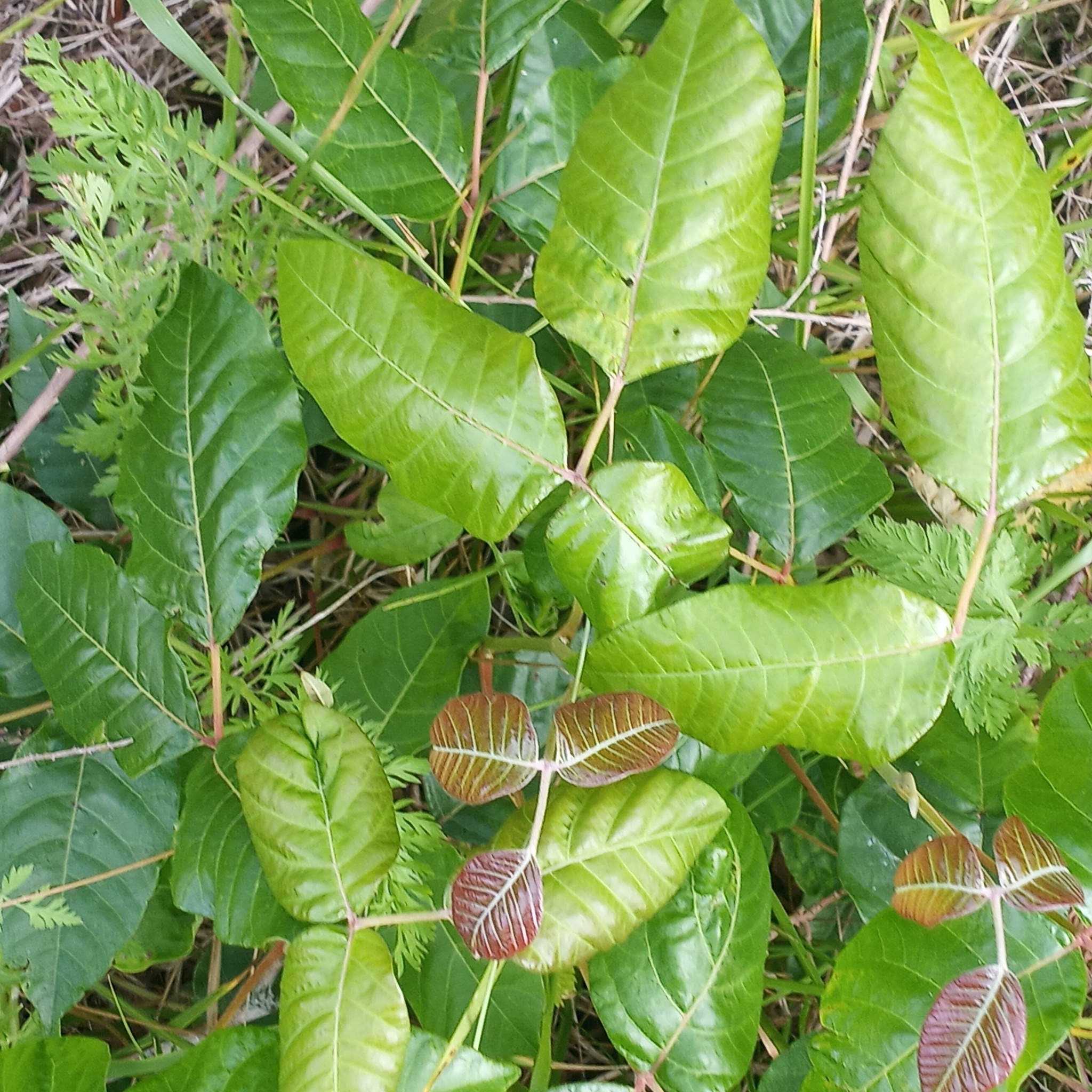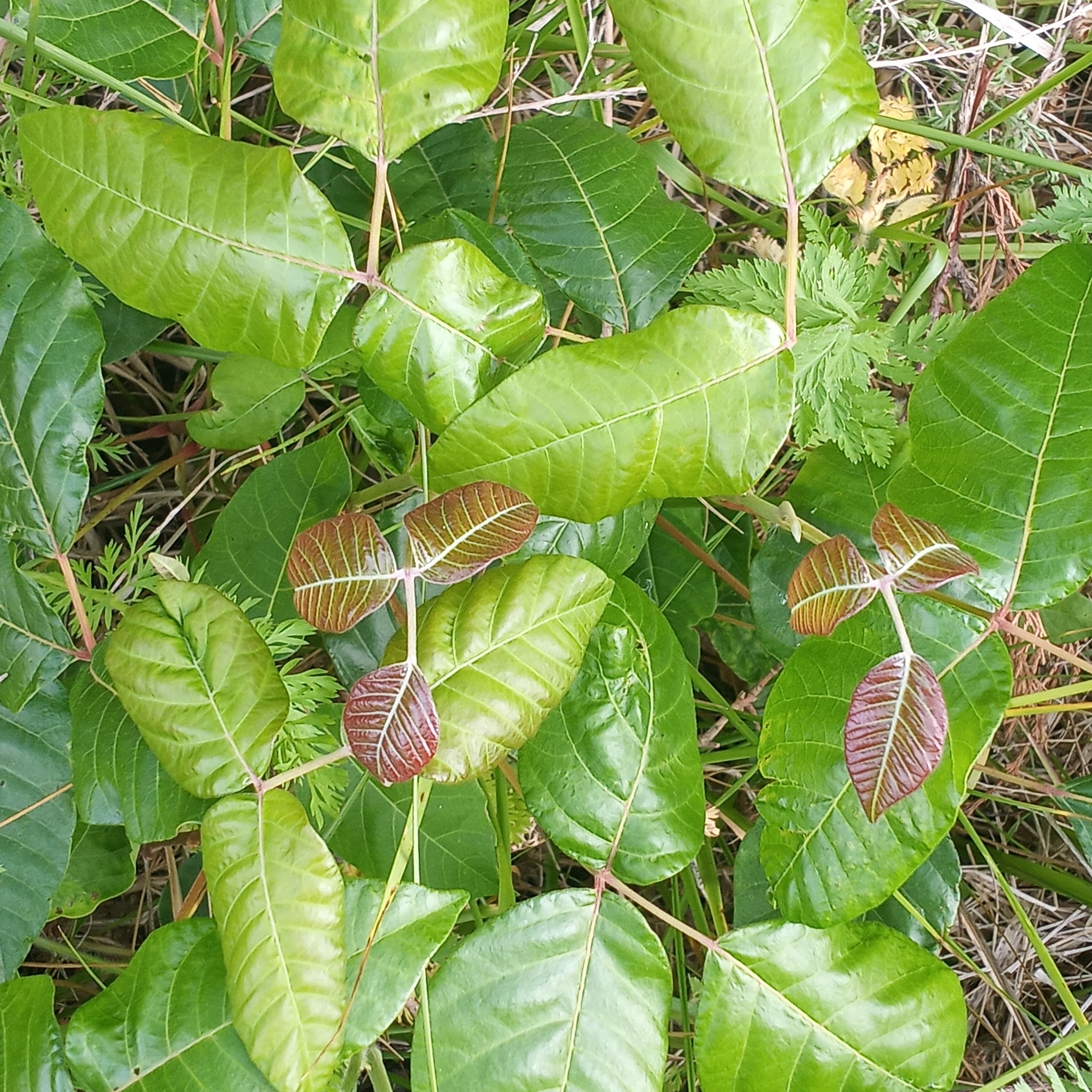

 Synonyms: Eastern Poison-ivy, Poison Ivy, Rhus radicans, Rhus toxicodendron, Toxicodendron radicans ssp. radicans.
Synonyms: Eastern Poison-ivy, Poison Ivy, Rhus radicans, Rhus toxicodendron, Toxicodendron radicans ssp. radicans.
























A vine that is common across the state and most of the nation.
Eastern Poison Ivy is a native early-successional species, taking advantage of disturbance, whether human-caused or natural. It is sun-loving and grows prolifically, producing networks of roots that spread easily. This is a benefit for shorelines and dunes, helping hold the sand in place. It has a variety of growth habits, from creeping along the ground via runners, to climbing high up in trees. Older vines on tree trunks have numerous hairs, helping identify the plant. The leaves, almost always composed of three leaflets, are highly variable in size and shape. The fruits, on branches off the main vine trunk, persist into the winter, making identification easy even at that season.
Poison Ivy is common in open places.
Berries are an important food source for many songbirds. A host plant to various moth species including Dark Marathyssa Moth. Sumac Leafblotch Miner Moth and Cameraria guttifinitella form leafmines on foliage.Host plant to the leaf beetle Pachybrachis tridens.Host plant for Poison Ivy Sawfly.Host plant for the Poison Ivy Leaf Gall Mite.
Although all parts of Eastern Poison Ivy can cause a contact dermatitis in people, it's best to leave it alone if it is growing in a place where people are not likely to come in contact with it. Well-intentioned people often cut it down in the mistaken belief that all vines are harmful to trees, but only the non-native vines pose a real threat (J. Hill/MNPS).
There are 1,562 records in the project database.
| GA | AL | WA | FR | CL | MO | HO | BA | BC | HA | CE | PG | AA | CV | CH | SM | KE | QA | CN | TA | DO | WI | SO | WO |
